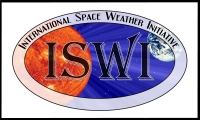The International Heliophysical Year (IHY) provided a successful model for the deployment of arrays of small scientific instruments in new and scientifically interesting geographic locations, and outreach, involving more than 70 countries during a two-year period from February 2007 to February 2009. A detailed account of all IHY activities is reported in the book The International Heliophysical Year: Putting the “I” in IHY, by Barbara J. Thompson, et al (2009). The new International Space Weather Initiative (ISWI) is designed to build on this momentum to promote the observation, understanding, and prediction space weather phenomena, and to communicate the results to the public.
Arrays of small instruments, such as magnetometers, radio antennas, GPS receivers, all-sky cameras, particle detectors, etc. that provide global measurements of heliospheric phenomena were deployed with the help of the United Nations Basic Space Science Initiative (UNBSSI). Scientific teams were organized, consisting of a lead scientist who provided the instruments or fabrication plans for instruments in the array, and scientists who provide support to operate the instruments. As a result of this program, scientists from many countries now participate in the instrument operation, data collection, analysis, and publication of scientific results, working at the forefront of science research.
The study of heliophysical events in the solar system during the ISWI will pave the way for safe human space travel to the Moon and planets in the future, and will serve to inspire the next generation of space physicists. These studies will also complement the large amounts of data from ground-based, and space-based missions.
